
The Senior's Guide to Downsizing:
The Power of Purposeful Rightsizing
Table of Contents
- Rightsizing vs. Downsizing
- Signs It's Time to Rightsize
- What To Consider When Rightsizing
- Practical Tips for Rightsizing
- Download the Rightsizing Checklist
- Life Plan Communities Support Your Lifestyle
- Downsizing FAQs
Look around your home. You’ll see a lot of features of a life well lived, but you’ll also see a lot of stuff. In fact, sometimes it feel like it's a battle of life vs. stuff. It’s easy to accumulate belongings throughout our lifetimes, and it can be hard to part with those items that haven’t been used in a long time (or ever) without feeling guilty.
Clutter has a way of multiplying. One survey found that more than half of U.S. adults are overwhelmed by the clutter they’ve accumulated, and 78% of them don’t know what to do with this clutter or think it’s too complicated to handle, leading to it building up. The challenge of a cluttered home is that it can be difficult to clean up, and there may not be a place for everything. It’s a vicious cycle in which things become more cluttered and overwhelming.
It’s time to take charge, get control over your belongings and start fresh. You deserve a space that feels inspiring to you — not overwhelming or stressful — and we’re here with tips on downsizing for seniors to help you achieve this goal.
More than half of U.S. adults are overwhelmed by the clutter they’ve accumulated.

Rightsizing involves making the most of your space and customizing it to fit your needs, whereas downsizing implies getting rid of your possessions.
The term “downsizing” has many negative connotations that can make people nervous. It can make you feel like you’re eliminating many of your belongings to move into a tiny space. It can also make you feel like you’re being forced to “get rid of” your possessions. None of this is true with rightsizing.
Rightsizing sometimes means moving into a smaller and more efficient space, but that isn’t always so. Rightsizing is all about having an understanding of what your lifestyle is, what you need and what you truly want in your home, and then narrowing down your belongings to align with that vision. You’re curating your belongings by removing items that you no longer need or want, creating a space that feels more welcoming and inspiring to you.

What
to Know
Rightsizing involves having an understanding of what your lifestyle is and curating your belongings in a way that supports it.
I had to go through the painful and, frankly, sad process of leaving my large home and getting rid of my things, but I knew this was what I wanted to do ... After going through this process, I wanted to share my journey with others, so I wrote a book, The Upside of Downsizing: Getting to Enough. It’s not a book about how to sell, sort and donate your things; it’s about the feelings you experience while doing all of that and knowing when you have enough.”
—
Dr. Sara B. Hart, resident of The Terraces at Los Altos, a HumanGood community

Remember: You don’t necessarily have to be preparing for a move to rightsize.
Clearing up accumulated clutter can help you feel a bit less stressed and make your household easier to take care of and safer for you to get around in. Starting the rightsizing process early can also help you down the road when you do move so that it’s less overwhelming when it’s time to pack and sell your residence.
When is it a good time to start rightsizing?
Here are some good indicators:
Lifestylechanges
This could include retirement, health changes, the loss of a spouse or simply wanting to change up your lifestyle and re-evaluate your possessions and home.
Accumulatingclutter
Clutter can build up quickly. If you have a lot of unused items lying around, it may be a good time to consider what you’re holding onto (and why).
Difficultymanaging possessions
If you have too much stuff, it can become a vicious and overwhelming cycle of having too much to manage.
Underutilizedrooms
Sometimes the problem is that you have unused rooms and more space than you truly need.
Challengeswith upkeep
Having extra space or a lot of unused items can be burdensome to clean and maintain. It can also become more difficult to keep up with home maintenance, yard work and repairs. Rightsizing can help eliminate these burdens.
Desirefor simplicity
It’s common for people to reach a point where they want fewer material possessions and to shift their focus to spending time with family and friends and pursuing their passions.
For years, we knew we wanted to be proactive about the next chapter in our lives. Our large house was more than we needed. We can now focus on what we want to do when we want to do it. It’s very freeing!”
—
Tom and Mary, residents of The Terraces of Boise, a HumanGood community

What
to Know
When is the right time to rightsize? Some signs that you may be ready to start rightsizing include having more than you can manage, a desire for fewer possessions and lifestyle changes. This quiz can help you find out if you’re ready to rightsize:
Additional Resources:

Why Should I Leave My Home?
How Moving to a Life Plan Community Relieves Stress
Rightsizing, especially for older adults, isn’t always easy. It’s natural to have a lot of emotions about the process at first, but once it’s complete and there’s less to manage, many people feel relieved.
Financial
You’ve likely put a lot of work and money into maintaining your house. You’ve managed lawn maintenance, removed snow, made regular repairs and replaced appliances on top of paying for utilities, a mortgage and other costs. All of this can add up and become overwhelming — especially because all of your bills are spread among different companies.
Rightsizing your possessions and moving to a smaller and more efficient space can help relieve the financial burden of maintaining a larger space. Plus, you can direct the money you save toward other pursuits. Turn that family vacation dream into a reality, enjoy dinner and a night out with friends, or explore hobbies or classes you’ve always been interested in. You’ll also have more time for these things because you’re focusing more on what you want to do rather than the upkeep of your home.
Rightsizing your possessions
and moving to a smaller and more efficient space can help relieve the financial burden of maintaining a larger space.
Emotional
It’s important to remember that rightsizing can bring about a lot of emotions, both positive and negative. Parting with belongings and leaving the family home can feel overwhelming at times. Make sure you have a support system of friends and family who can cheer you on, offer comfort on hard days and help keep your focus on the benefits ahead of you.
Dr. Sara B. Hart, a resident of The Terraces at Los Altos, a HumanGood Life Plan Community, wrote a book on the emotions of downsizing and her experience with the process. Sara says the most painful part of her own downsizing experience was letting go of items that had historical value to her. However, in the end, she felt relief at having fewer possessions and less to manage.
Maybe by hearing me talk about my experience
(with downsizing), people would hear that they’re not alone in the feeling, that this is something that many of us go through, and that you do come out the other end. I really wrote it because I wanted to see if I could make it a less painful process for people who find it painful.”
—
Dr. Sara B. Hart, resident of The Terraces at Los Altos, a HumanGood community, in an interview with the Los Altos Town Crier
Timing
The rightsizing process takes quite a bit of time. If you’re planning on moving, getting started with rightsizing your possessions well in advance of your target moving date can help ensure you’re not in a stressful last-minute time crunch to get through it all. If you’re not planning on moving soon, it’s still beneficial to start the rightsizing process now before it’s potentially a necessity later.
To keep yourself focused and on schedule with rightsizing, create a timeline with your target completion date. Keep the following in mind as you make your timeline:
Are family and friends able to help you sort your belongings?
Do you intend to hire professionals to assist with packing or moving?
Do you need to meet with your financial advisor or revisit your retirement plan?
How quickly do you want to move? It's important to establish a realistic timeline for rightsizing.
Are there upcoming life events, such as retirement, that may impact your timing?
What can you do to help protect your emotional health and ensure you’re going at a pace that works for you?
Remember to take your time. There’s no need to rush through everything in a day, week or even a month.

What
to Know
Rightsizing isn’t always easy. It can bring up plenty of emotions and take a lot of time. Give yourself extra time to get through the process — it can take months or even up to a year to get through everything.
Committing your efforts and time to rightsizing and removing clutter can feel a bit daunting at first, but it’s well worth the effort and time you put into it.
Here are some practical tips for your rightsizing process:

Create Goals
Consider your current home, needs and what you envision for your future. There are no right answers here; simply consider what works best for you, whether it’s minimizing your possessions, removing unused items or preparing for a move. These are the goals you want to achieve by rightsizing.

Hire Professionals
You don’t have to do this alone. Rightsizing is a large job, and even if you have help from your friends and family, it can still be useful to hire packing and moving professionals who may be able to do the job faster.
Determine the Size of Your Space
If you’re moving to a new residence, take measurements of your new space to help you determine what to bring with you that will fit into your new home. Some things to consider are the furniture pieces you want to bring, how many clothes will fit in your new closet and what types of home decor items you’ll want to decorate your new space with.
Tackle Individual Rooms
It can feel overwhelming to have an entire house’s worth of items ahead of you, and you may not know where to begin. Be methodical with this part of the process by tackling an individual room before moving on to the next.
Avoid trying to tackle similar items that may be in different parts of the house. These endless categories may seem more overwhelming, and you still have the entire house in front of you to organize.
Working room by room will give you smaller bits to focus on and cross off your list. Start with your most used rooms first. For example, you may start with the living room and bedrooms first and then end your process with the basement, attic or garage.

Prioritize
Determine which types of items are most important, somewhat important and least important, or create another ranking system to help you decide what to keep. It can be easy to want to keep everything because it has sentimental value, so a ranking system can help you get through the process more efficiently.
Sort Items
Keep organized bins and spots for items you’re keeping, items you’re gifting to others, items you’re donating or selling and items that should be discarded because they’re no longer usable or not in good condition. Avoid making a “maybe” pile — this can prolong the process. When you pick up an item, try to immediately decide what you’re doing with it.

Eliminate Unnecessary Duplicates
An easy way to start reducing items is to eliminate duplicates. In many cases, having multiples of the same item — such as extra spatulas or winter gloves — is unnecessary.
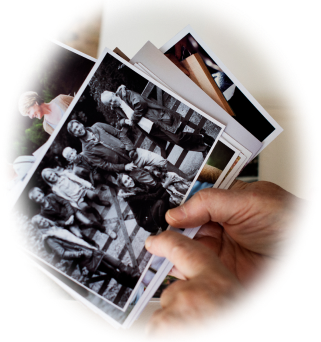
Digitize What You Can
If you have a lot of photo albums, letters or your kids’ or grandkids’ artwork, consider digitizing them by scanning or taking a high-resolution photo of the item. If this task seems too daunting to do alone, consider outsourcing to a company such as Kodak or ScanCafe to help. You can then invest in a digital photo frame to display your pictures.
Decluttering and rightsizing to a space that’s the right fit for you can help your possessions and home feel more manageable and enable you to focus more on things that matter the most, such as your family and friends and the ability to pursue your passions.
Life Plan Communities (sometimes known as continuing care retirement communities or CCRCs) can also ensure you have more time to spend on what matters. Life Plan Communities offer maintenance-free independent living homes (generally apartments or cottages) for older adults, and have future care options available on campus. These all-inclusive communities generally offer fine amenities, multiple dining options, fitness programs and other well-being support, and social and learning opportunities. These communities are about more than care — they’re about living life to the fullest every day.
One of the main benefits of living in a Life Plan Community is the ability to focus on what you want to — whether that’s spending time with friends or family, traveling or pursuing your interests — without the stressors of home upkeep or maintenance.
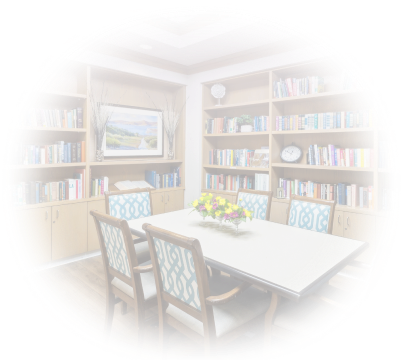
What
to Know
Life Plan Communities are lifestyle-infused environments that provide the foundation you need to live your best life and focus more on your passions and spending time with those you care about instead of home maintenance.
Frequently Asked Questions About Downsizing for Seniors
Rightsizing can be emotional and also can bring up a lot of questions and concerns. Here are some of the most frequent questions people have about this process.
Not necessarily. You may choose to rightsize because you have more possessions than you can manage or because you have unused items that you think others would enjoy more.
Many items can hold memories, which can make them difficult to let go of. It’s important to focus on the items that have the most meaning to you and those that are essential to keep. It can help to create a ranking system to help you determine which items should stay or go.
Give yourself at least three months to rightsize your possessions. Don’t rush, especially if you’re rightsizing because you’re preparing to move. Giving yourself time for the whole process can help ensure you’re not in a stressful last-minute time crunch.
Whenever you want! You may choose to rightsize your possessions early because they’ve become hard to manage, or you may want to take advantage of the amenities, social events and more that Life Plan Communities offer.
The rightsizing process means that you’ll be removing some of your items. This can be an emotional process at first, but once you’re finished, you will likely feel relieved to have a more manageable number of items.
Find a Community Near You
Discover how a HumanGood Life Plan Community provides the recipe for living your best life filled with meaningful connections, security and well-being.
FIND A COMMUNITY{{name}}
{{#if street_address_2}}{{street_address_2}}
{{/if}}
{{phone}}
{{/if}} {{#if website}}{{/if}} {{!-- {{#if distance}}{{name}}
{{street_address_1}}
{{#if street_address_2}}{{street_address_2}}
{{/if}}
{{phone}}
{{/if}}Independent Living
{{else}}Residential Living
{{/if_eq}} {{/if}} {{#if skilled_nursing}}Skilled Nursing
{{/if}} {{#if memory_care}}Memory Support
{{/if}} {{#if assisted_living}} {{#if_eq state 'Pennsylvania'}}Personal Care
{{else}}Assisted Living
{{/if_eq}} {{/if}}













